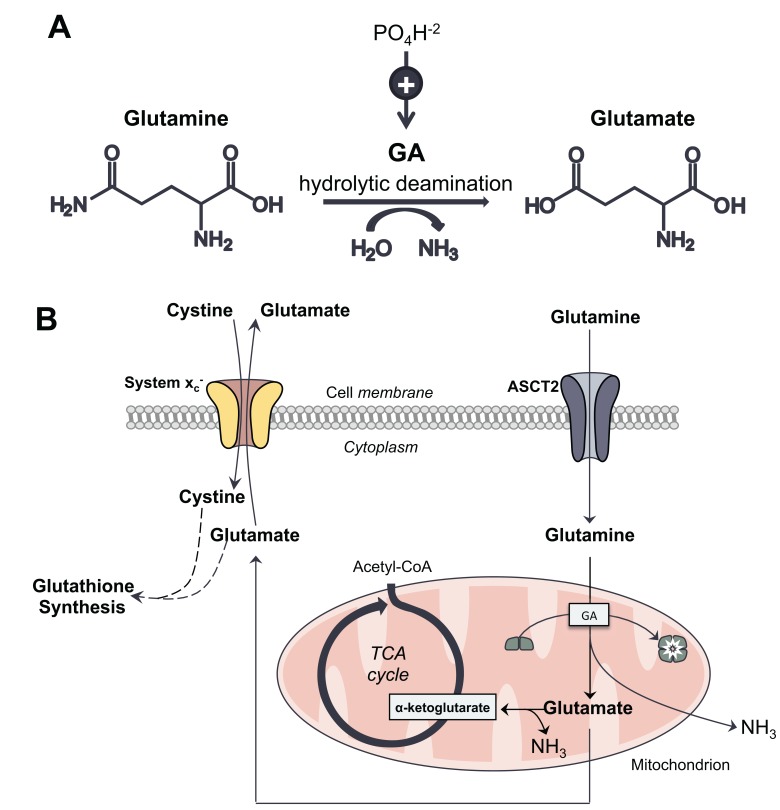Fig. (1).
A. Glutamine, the major circulating amino acid, undergoes hydrolytic deamidation through the enzymatic action of glutaminase (GA), producing glutamate and ammonia (NH3). GA is referred to as phosphate-activated, as the presence of phosphate can up-regulate its activity. B. In cancer cells, glutamine enters the cell through its membrane transporter, ASCT2. It is then metabolized in the mitochondria into glutamate through glutaminolysis, a process mediated by GA, which is converted from an inactive dimer into an active tetramer. Glutamate is subsequently transformed into α-ketoglutarate, which is further metabolized through the TCA cycle to produce pyruvate and NADPH, key cellular energy sources. The high rate of glutamine metabolism leads to excess levels of intracellular glutamate. At the plasma membrane, system xc- transports glutamate out of the cell while importing cystine, which is required for glutathione synthesis to maintain redox balance. NH3, a significant by-product of glutaminolysis, diffuses from the cell.

